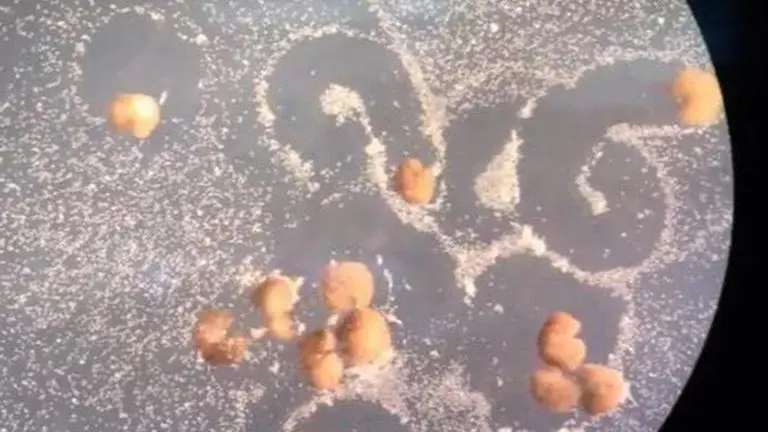Updated 30 November 2021 at 20:49 IST
World's 1st living robots 'Xenobots' can now reproduce; Experts call discovery 'profound'
The world's first living robots that were developed in 2020 from frogs cells by US scientists, have turned into the first-ever reproducing robots.
- Science News
- 3 min read

The world's first living robots, that were developed in 2020 from frog cells, have turned into the first-ever reproductive robots. A team of scientists from the University of Vermont, Tufts University and Harvard University's Wyss Institute for Biologically Inspired Engineering, who were also its developers, has now found their creation replicating to produce their young ones. However, this replication process is entirely different from the natural processes seen in the biological world.
Our third xenobots paper was published today in PNAS.
— Sam Kriegman (@Kriegmerica) November 29, 2021
In a nutshell: they can now self-replicate.
w/ @DougBlackiston, @drmichaellevin, @DoctorJosh
More info: https://t.co/ySLBHeaGlL pic.twitter.com/vTvS2E3PoG
How were the 'robots' created?
Named 'Xenobots', these creatures were created out of the embryonic stem cells of the Xenopus laevis frog and were introduced to the world last year. These cells were incubated into saline water and the scientists waited for the result without any gene manipulation. Josh Bongard, a computer science professor and robotics expert at the University of Vermont said in a CNN interview, "Most people think of robots as made of metals and ceramics but it's not so much what a robot is made from but what it does, which is act on its own on behalf of people. In that way, it's a robot but it's also clearly an organism made from genetically unmodified frog cell."
Experts discover that Xenobots could replicate on their own
The experts, who discovered the replication of the Xenobots, have published their findings in the journal PNAS. Earlier, the experts found that these creatures, measuring no more than half a millimetres, are capable of self-healing, moving and working in groups, however, new discovery confirms that they can also self-replicate. Lead study author Sam Kriegman was reported saying as per SciTechDaily, "These are frog cells replicating in a way that is very different from how frogs do it. No animal or plant known to science replicates in this way."
In a visual created using artificial intelligence, the C-shaped Xenobots were seen consuming the stem cells in the Petri dish, and bundling them together inside its mouth, which after a few days emerged as a new Xenobot. Calling the discovery "profound", Michael Levin, a professor at Tufts University said as per SciTechDaily, "These cells have the genome of a frog, but, freed from becoming tadpoles, they use their collective intelligence, a plasticity, to do something astounding." The scientists believe that this combination of self-replicating biotechnology and artificial intelligence will be immensely beneficial in the development of regenerative medicine and even the collection of microplastics in the oceans.
Advertisement
Image: Twitter/@Kriegmerica
Published By : Harsh Vardhan
Published On: 30 November 2021 at 20:49 IST
